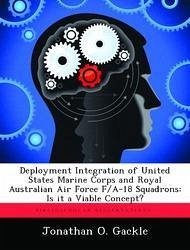
Forward Air Controller: Is he a Viable Factor in Central Europe?
Versandkostenfrei!
Versandfertig in über 4 Wochen
53,99 €
inkl. MwSt.

PAYBACK Punkte
27 °P sammeln!
The problem undertaken in this thesis is to determine whether or not the Forward Air Controller (FAC), as currently trained and equipped, would be a viable factor in a mid-intensity conflict in Central Europe. Areas investigated included the Soviet threat, terrain and climatological factors prevalent in Europe, the number of FACs assigned to support Army maneuver units, the equipment they use, and the training they receive. The conclusions drawn from this analysis are: (1) The FAC is improperly trained, in that he is not provided sufficient ground FAC training during the initial training perio...
The problem undertaken in this thesis is to determine whether or not the Forward Air Controller (FAC), as currently trained and equipped, would be a viable factor in a mid-intensity conflict in Central Europe. Areas investigated included the Soviet threat, terrain and climatological factors prevalent in Europe, the number of FACs assigned to support Army maneuver units, the equipment they use, and the training they receive. The conclusions drawn from this analysis are: (1) The FAC is improperly trained, in that he is not provided sufficient ground FAC training during the initial training period, and the airborne training does not present survivable techniques for a mid-intensity conflict. (2) The FAC does not receive sufficient ground training with the supported maneuver unit once he reaches his final destination. (3) The airborne FAC is not properly equipped, in that the OV-10 aircraft could not survive the vast array of surface-to-air weapons available to Soviet forces. (4) Standardized armored vehicles are not available to the ground FAC for either training or actual combat. (5) Based on the tactics and procedures presently being taught, the number of FACs available in Europe today is not sufficient to meet the demand created by a conflict in Europe. The United States Air Force is at a critical juncture in its conduct of the close air support mission run by forward air controllers. If the Army is to be provided the type of support they are currently being promised, then several areas must be changed. Training and tactics must be upgraded to reflect the current threat. The FAC must be provided with both aerial and ground vehicles that are designed to survive in a mid-intensity environment. Adequate numbers of FACs must be trained and available to meet the requirements of a short notice war. Finally, the Army and the Air Force must realistically review the threat, and establish a strong, well trained combined arms team that will accomplish doctrinal requirements.












